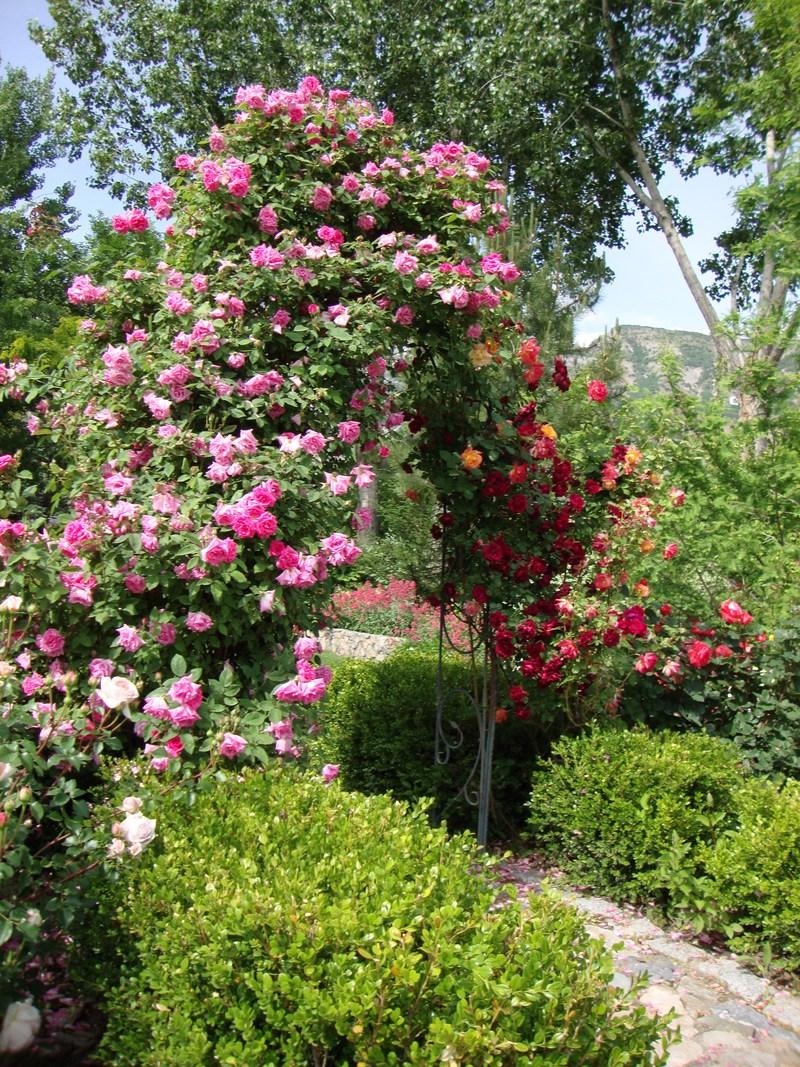Climbing roses produce two kinds of shoots: the main structural canes and the flowering shoots, which grow from the canes. The long structural canes must be tied or woven into a support to keep the flowers off the ground. If possible, install the support before planting your roses. Roses require at least 6 hours of sunlight during the growing season and fertile, well-drained soil.

Choose a support. Roses produce more flowers when the structural canes grow horizontally, such as along a fence, than when grown vertically, as on a rose tower. When selecting a trellis, also consider ease of access for pruning and the trellis' ability to hold the weight of a full grown rose in wet and windy weather.
Install the trellis. Be sure the support is firmly anchored in the ground and strong enough for the mature weight of the plants. If growing against a building, position the trellis a few feet from the wall to allow for air circulation and maintenance. Place it at right angles to the prevailing wind or in a sheltered spot in very windy areas.
Plant your roses. Dig a hole twice as wide as the root spread and about 2 feet deep with the center about 18 to 30 inches from the support. If planting a bare-root rose, make a cone of soil in the center of the hole on which to drape the roots. Plant the graft union, the bulge where the top joins the bottom, 2 to 6 inches below the soil line in cold-winter climates, slightly above the soil level in warmer regions. Adjust the soil level under the plant accordingly.
Water deeply, then spread compost or well-rotted manure and a handful of bonemeal other phosphorus-rich fertlizer around the plant, and water again. Spread a mulch of wood chips, cocoa bean hulls, or the like around the plant, taking care not to heap the material around the rose's trunk.
Attach the canes. Select the sturdiest structural canes and tie them loosely to the support with strips of stretchy cloth, such as pantyhose. Space the canes evenly and as close to horizontal as possible.
Maintain and enjoy. Allow climbers to grow unpruned (except to remove dead or broken branches) for two or three years. On established plants, prune dead, damaged, and overcrowded canes to the base. Tie in new canes to replace them. Prune the flowering side shoots to two to three buds above the structural canes during the dormant season.

Provide winter protection in USDA Zones 7 and colder by untying canes and laying them gently on the ground. Pin them down with U-shaped wire staples and cover with soil or mulch.
Plant a clematis vine 2 to 3 feet away from your climbing rose and train them to grow together for an extended flowering display.